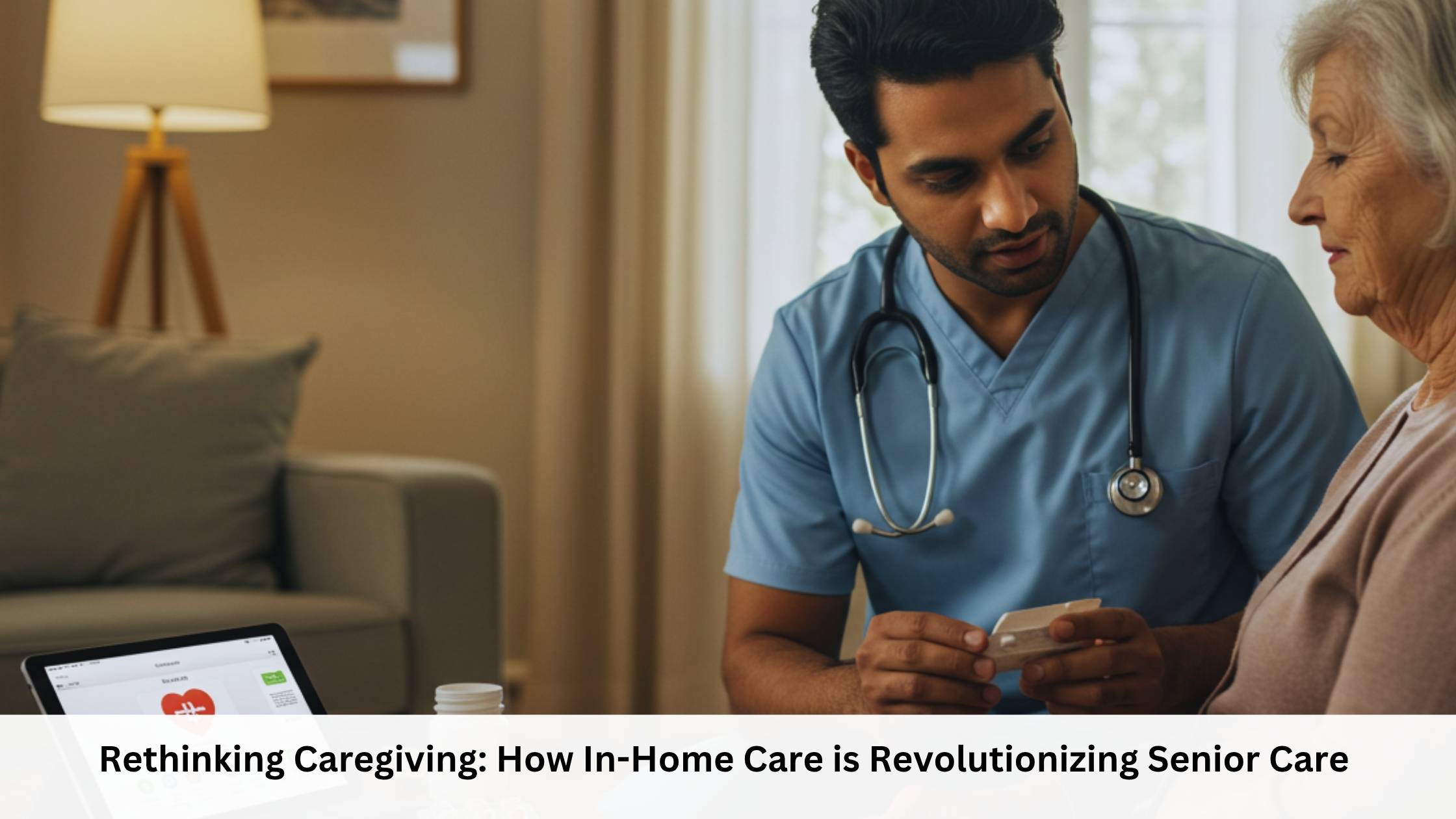Caregiving is an age-old practice that ties families together, often filled with love, sacrifice, and responsibility. Today, however, the way we care for aging loved ones is undergoing a significant transformation. Traditional nursing homes and care facilities, once the default option, are no longer the only paths available. Instead, in-home care has emerged as a game-changing alternative, providing seniors with the support they need in the comfort of their own homes. But how is this evolution reshaping caregiving, and what does it mean for families and seniors alike?

This blog dives into the role in-home care is playing in modern caregiving, exploring its unique benefits, real-world impacts, and why it’s emerging as the preferred choice for so many.
Caregiving, Redefined
Gone are the days when caregiving was synonymous only with familial roles or large-scale care facilities. With the rise of in-home care services and technological advances, caregiving has been redefined to align better with individual lifestyles and preferences.
Studies indicate that 76% of adults over 50 prefer to age in their own homes rather than move into a care facility (AARP). This growing demand stems from a desire not just for physical comfort but for emotional well-being, independence, and the ability to stay connected to one’s community and family.
But how exactly does in-home care improve the experience of caregiving?
Why Families are Turning to Independent Lifestyles
1. A Personalized Care Experience
Every senior is unique in their needs and preferences. While care facilities operate on preset schedules, in-home care offers personalized assistance that adapts to the specific requirements of seniors and their families. For example, caregivers can support activities of daily living, such as meal preparation, bathing, and mobility, without disrupting established routines.
Take Mrs. Walsh, a 79-year-old grandmother, who depends on a caregiver every morning for light housekeeping and mobility exercises. Her afternoons remain her own, where she spends time tending to her garden or video chatting with her grandchildren. This balance of structure and autonomy would be hard to replicate in a traditional care facility, highlighting the adaptability of in-home care.
2. Staying Connected with Loved Ones
One of the greatest joys of caregiving is ensuring seniors stay close to the people they love. This can be difficult in residential facilities, where family visits are often limited to specific hours. With in-home care, seniors don’t have to sacrifice proximity to their loved ones.
Not only can family members drop by whenever they wish, but they can also actively participate in caregiving tasks. Supporting your loved one in their daily activities, like sharing meals or going for walks, strengthens bonds and ensures caregiving feels like teamwork, not a burden.
3. Financial Flexibility
Contrary to popular belief, in-home care can be more cost-effective than facility-based options, making it a viable solution for many middle-income families.
For instance, part-time care services are significantly less expensive than the fixed, all-inclusive costs of nursing homes. Additionally, many services integrate Medicaid, grants, or long-term insurance benefits to further ease the financial burden.
This flexible approach allows families to create care solutions tailored to their budget while ensuring seniors receive the quality care they deserve.
4. More than Physical Care
Loneliness and boredom are universally acknowledged challenges among seniors. Many in-home care programs go beyond addressing physical needs to provide emotional and mental stimulation, such as engaging in hobbies or participating in community activities.
Some caregivers even plan outings or assist with technology that lets seniors engage online, keeping their social connections alive. This holistic care approach ensures they remain active participants in their own lives rather than passive recipients.
Tackling Common Caregiving Concerns
Despite its advantages, families often have questions before choosing in-home care. Here are some common concerns and how in-home care addresses them.
Is it safe to rely on in-home caregivers?
Yes. Professional in-home care agencies rigorously vet their caregivers, conducting background checks and thorough training sessions to ensure quality and trustworthiness. Families also have the option to meet multiple candidates before selecting the one who best aligns with their loved one’s needs.
Will my parent feel isolated at home?
Not at all. Many in-home care providers emphasize companionship as part of their service. From sharing stories to coordinating outings, caregivers help seniors remain socially active while avoiding loneliness.
What happens if their medical needs increase?
Most in-home care programs incorporate skilled nursing, physical therapy, and even rehabilitation services, allowing seniors to receive medical support tailored to their evolving needs.
Real-World Impact of Modern Caregiving
Take the story of Mr. Nguyen, an 84-year-old retired chef who struggled with early-stage Alzheimer’s. His daughters initially considered moving him into an assisted living facility, but ultimately decided in-home care was the better solution.
With a caregiver available for a few hours a day, Mr. Nguyen could safely continue his routine of trying out new recipes in his kitchen. On weekends, his daughters visited to share meals and reminisce about tasting his creations as children. By staying in his home, Mr. Nguyen retained a sense of purpose while building cherished new memories with his family.
This harmony between safety, independence, and family connection showcases how modern caregiving can enhance not just the senior’s life but the family’s as well.
The Bigger Picture of Senior Care and Independence
The rise of in-home care is more than a shift in how we deliver support; it’s a complete transformation in how society views aging and caregiving. It’s helping rewrite the narrative of growing older—not as a loss of freedom, but as an opportunity to shape your senior years meaningfully, with tailored support.
For families, this change offers reassurance. Knowing your loved one is in expert hands while staying comfortably at home is a level of peace that traditional caregiving models often struggle to provide.
Transforming Caregiving Experiences
Caregiving has always been rooted in compassion, but today’s advancements allow that compassion to evolve into smarter, more personalized care. From preserving dignity to strengthening family bonds, modern caregiving empowers families to support their loved ones in meaningful ways, especially through in-home solutions that prioritize both comfort and quality of life.
Exploring care options? Now is the time to look into trusted in-home care providers and discover how this approach can transform your family’s caregiving experience.






